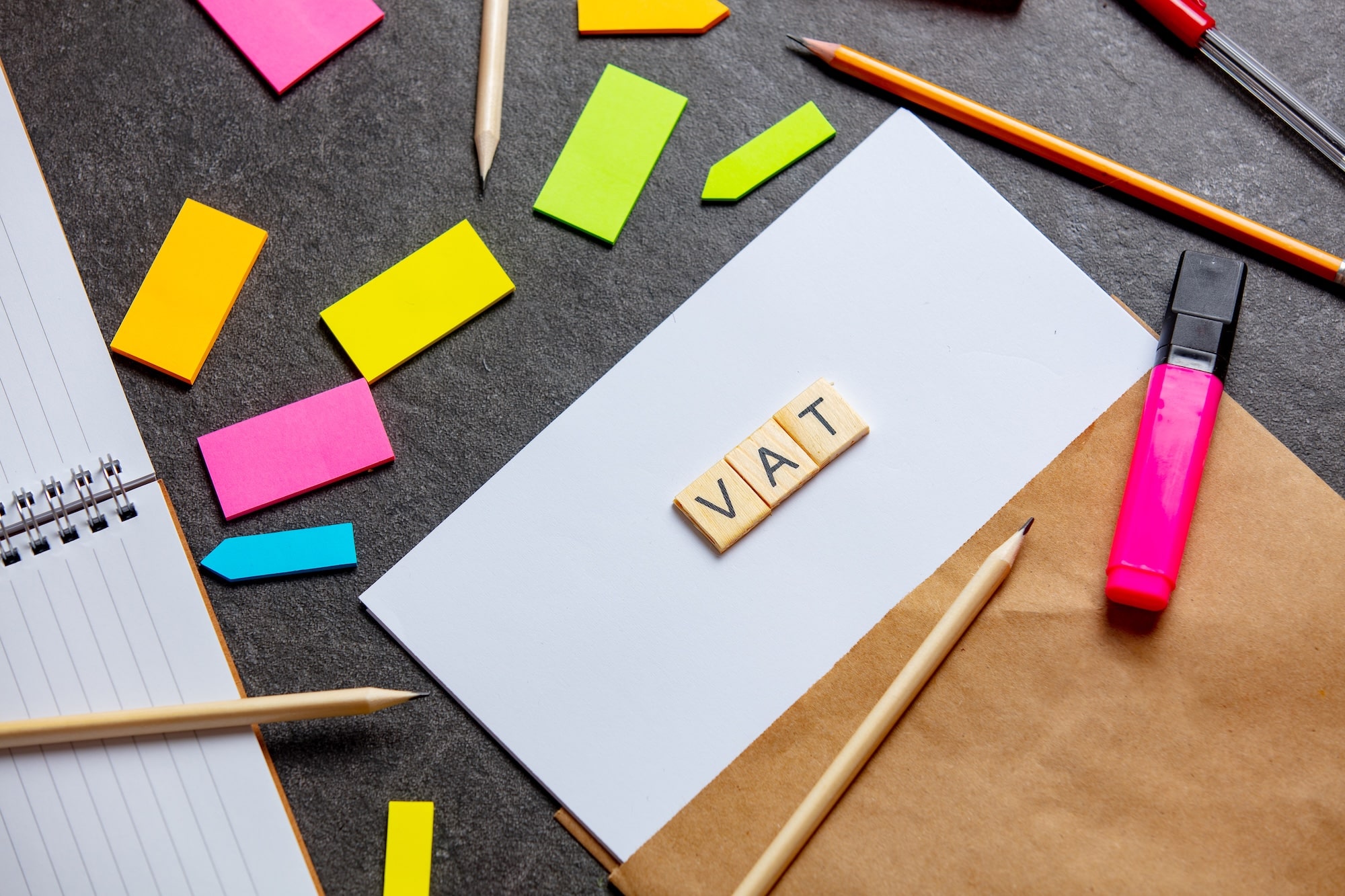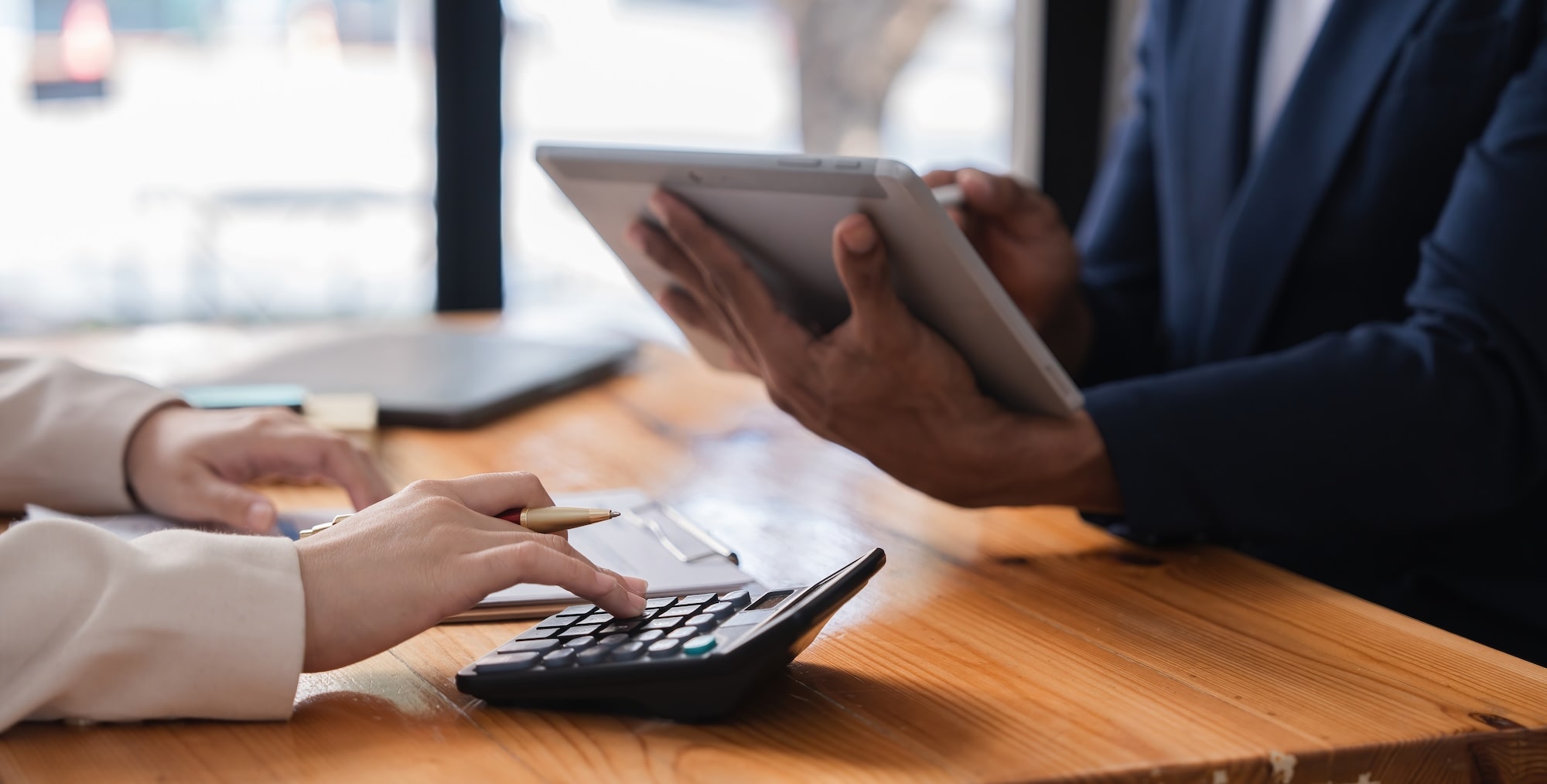Value Added Tax (VAT) is a consumption tax applied to most goods and services sold in the UK. For businesses,
VAT registration marks an important compliance milestone that often accompanies growth. For sole traders, understanding VAT is especially critical, as their tax and administrative responsibilities differ from those of limited companies.
This guide explores VAT registration for sole traders, answering common questions about thresholds, benefits, and the registration process. Whether you’re just starting out or expanding your business, this article will help you determine if VAT registration is necessary or advantageous for your circumstances.
Our VAT registration and tax planning services are designed to support sole traders and businesses of all sizes.

What Is VAT and How Does It Work?
Understanding VAT
Value Added Tax (VAT) is a government-mandated tax charged on most goods and services sold in the UK. While consumers ultimately bear the cost of VAT, businesses act as intermediaries, collecting the tax from their customers and remitting it to HM Revenue and Customs (HMRC).
VAT applies at different rates depending on the type of goods or services provided. The standard rate is currently 20%, but certain items fall under reduced (5%) or zero-rate categories.
Businesses can also reclaim VAT on eligible purchases, offsetting their VAT liabilities. For sole traders, understanding how VAT works and when to charge it is essential for maintaining compliance.
Who Needs to Register for VAT?
VAT registration is mandatory for businesses, including sole traders, whose taxable turnover exceeds the threshold of £85,000 in any rolling 12-month period. Taxable turnover includes all income from the sale of goods or services subject to VAT.
Even if your turnover is below the threshold, you may choose to register voluntarily. This can be beneficial for reclaiming VAT on expenses or boosting credibility with clients.
However, voluntary registration also comes with increased administrative responsibilities, so it’s important to weigh the pros and cons carefully.
If your taxable turnover is approaching the threshold or you’re unsure about VAT registration, seeking professional advice can help you stay compliant and make informed decisions. Ryans offers tailored support to guide sole traders through every step of the VAT registration process.
Does a Sole Trader Need to Be VAT Registered?
Legal Requirements for Sole Traders
Sole traders are legally required to register for VAT if their taxable turnover exceeds £85,000 in any 12-month period. Taxable turnover includes income from the sale of goods or services subject to VAT, excluding items such as exempt supplies.
Failing to register on time can result in penalties from HM Revenue and Customs (HMRC). These penalties are typically based on how late the registration is and the amount of VAT owed.
Additionally, sole traders may also be required to pay interest on unpaid VAT.
It’s important to regularly monitor your taxable turnover, especially if your business experiences growth or fluctuating revenue, to ensure compliance with VAT rules.
For businesses nearing the threshold, preparing ahead and seeking professional advice can prevent unexpected issues.
Voluntary VAT Registration
While VAT registration is mandatory for businesses exceeding the threshold, many sole traders opt to register voluntarily, even when their turnover is below £85,000. There are several reasons why this can be beneficial:
- Boosting Credibility with Clients: Being VAT-registered can enhance the perception of your business, especially when working with larger companies or those that expect to deal with VAT-registered suppliers. It can signal professionalism and growth.
- Reclaiming VAT on Business Expenses: VAT-registered sole traders can reclaim VAT on purchases related to their business, reducing overall costs and improving cash flow. This can be particularly advantageous for businesses with significant upfront or ongoing expenses.
However, voluntary registration comes with potential downsides. The added administrative burden of filing VAT returns and keeping accurate records can be time-consuming, especially for sole traders who manage their own finances
Additionally, charging VAT may increase the cost of goods or services for customers who are not VAT-registered, potentially affecting your competitiveness in certain markets.
Before opting for voluntary registration, it’s essential to weigh these pros and cons in the context of your business. Consulting with a professional accountant, such as Ryans, can help you determine whether voluntary registration aligns with your financial goals and operational needs.
Benefits and Drawbacks of VAT Registration for Sole Traders
Advantages of Being VAT Registered
One of the most notable advantages of VAT registration for sole traders is the ability to reclaim VAT on eligible business purchases.
This can be especially beneficial for businesses with significant upfront costs, such as purchasing equipment, supplies, or other goods and services essential to operations. Reclaiming VAT reduces your overall expenses and can improve cash flow.
Additionally, being VAT-registered enhances your professional image, particularly when dealing with larger, VAT-registered clients. Many businesses perceive VAT registration as a sign of growth and credibility, which can help you establish stronger relationships and attract more clients.
VAT registration also prepares your business for future growth. If your turnover is approaching the VAT threshold or you anticipate growth in the near future, registering voluntarily can simplify the transition and ensure compliance as your business expands.
Disadvantages of VAT Registration
While VAT registration offers several benefits, it also comes with drawbacks that must be carefully considered. One key disadvantage is the increased administrative workload.
As a VAT-registered sole trader, you are required to maintain detailed records of VAT charged and paid, and submit VAT returns to HMRC quarterly or annually, depending on your chosen VAT scheme. This additional responsibility can be time-consuming, particularly for sole traders managing their own accounts.
Another challenge is the impact on pricing. Being VAT-registered means you must charge VAT on your products or services. This can increase costs for customers who are not VAT-registered themselves. This may affect your competitiveness, especially in markets where price sensitivity is high.
It’s crucial to weigh these pros and cons in light of your specific business circumstances. Consulting an experienced accountant, like Ryans, can help you make an informed decision about VAT registration.
Impact of VAT Registration on Business Strategy
VAT registration doesn’t just affect tax compliance—it can shape a sole trader’s entire business strategy, influencing everything from pricing and profit margins to competitive positioning and future expansion.
Understanding how VAT affects your business model is crucial to making the right decision for long-term growth.
How VAT Registration Affects Pricing Strategy
One of the most immediate impacts of VAT registration is on pricing strategy. If you’re VAT-registered, you need to decide whether to absorb the VAT cost within your existing prices or increase prices to reflect VAT charges.
Or, if you increase prices to pass VAT onto customers, your products or services may become less competitive, particularly if your target market includes non-VAT-registered consumers who can’t reclaim VAT.
Instead, you may absorb VAT costs, which reduces your profit margins per sale and may require adjustments in business operations, resource allocation, or cost-cutting strategies to remain profitable.
Many VAT-registered sole traders find a middle ground, adjusting pricing gradually while ensuring customers understand whether prices are VAT-inclusive or exclusive to maintain transparency.
Competitive Positioning and Market Impact
VAT registration can impact how you position yourself within your industry and against competitors.
Competing with Non-VAT-Registered Businesses: If many of your competitors are not VAT-registered, they can afford to offer lower prices, making your products or services seem more expensive to consumers.
Dealing with VAT-Registered Clients: If your primary customers are VAT-registered businesses, VAT registration is less of an issue, as they can reclaim VAT on their purchases. In this case, VAT registration could actually be an advantage, improving B2B relationships and credibility.
Marketing and Customer Perception: Sole traders need to clearly communicate pricing changes to customers. Displaying VAT-inclusive pricing upfront can prevent confusion and ensure customers understand what they’re paying.
Profit Margins and Resource Allocation
Beyond pricing, VAT registration directly influences profitability and business operations.
Higher Administration Costs: VAT registration comes with additional administrative responsibilities, including digital record-keeping, VAT returns, and compliance with Making Tax Digital (MTD). This may mean investing in VAT-compatible accounting software or outsourcing bookkeeping to manage VAT efficiently.
Cash Flow Management: VAT-registered sole traders must collect VAT on sales and pay it to HMRC through regular VAT returns. This means setting aside funds to cover VAT payments and avoiding unexpected cash flow issues.
Expansion Opportunities: Some sole traders view VAT registration as a step toward business growth. If turnover is increasing, registering for VAT early can make scaling up easier and more seamless, particularly when dealing with larger clients and suppliers.
Long-Term Business Growth and VAT Registration
For sole traders aiming for business expansion, VAT registration is often an inevitable step. As your taxable turnover approaches the £85,000 threshold, planning ahead ensures a smooth transition into VAT compliance.
Structuring Your Business for Growth: Some sole traders reassess their business structure at this stage, considering incorporation into a limited company to optimise tax efficiency.
Investment in VAT Technology: Many businesses adopt HMRC-approved VAT software early to streamline VAT compliance and automate reporting, reducing future accounting challenges.
Strategic Financial Planning: Understanding VAT’s role in long-term strategy helps businesses make informed decisions about pricing, resource allocation, and market positioning for sustainable growth.
How Ryans Can Help with VAT Strategy
Deciding whether to register for VAT voluntarily or wait until mandatory registration requires careful financial and strategic planning. Ryans provides expert VAT advisory services to help sole traders:
- Develop a VAT pricing strategy that balances competitiveness and profitability.
- Ensure VAT compliance while optimising tax efficiency.
- Navigate VAT technology solutions to simplify record-keeping and reporting.
- Assess the impact of VAT on business growth and structure.
For personalised guidance on VAT strategy, contact Ryans today and gain expert support tailored to your business needs.
How to Register for VAT as a Sole Trader
Steps to Register
Registering for VAT as a sole trader is a straightforward process that can be completed online via HMRC’s website or by submitting a VAT1 form by post. The online process is quicker and recommended for most sole traders.
To complete your registration, you’ll need to provide key details, including your:
- Taxable turnover to date.
- Estimated turnover for the next 12 months.
- Business activities and industry sector.
- Information about your business structure (sole trader).
Once registered, you’ll receive a VAT registration certificate, which includes your VAT number, the effective date of registration, and filing deadlines. You’ll then need to begin charging VAT, keeping records, and submitting VAT returns based on your chosen scheme.
Choosing a VAT Scheme
HMRC offers several VAT schemes to suit different types of businesses, and selecting the right one is essential for efficient financial management:
- Standard VAT Accounting: This is the default scheme where VAT is accounted for on every sale and purchase. Sole traders with varying cash flow or high VAT on purchases often prefer this scheme as it allows for more precise VAT accounting.
- Flat Rate Scheme: Designed for businesses with turnover under £150,000 (excluding VAT), this scheme simplifies VAT accounting by allowing you to pay a fixed percentage of your turnover as VAT. However, you cannot reclaim VAT on purchases under this scheme.
- Annual Accounting Scheme: This scheme allows you to make advance VAT payments based on an estimate, with a final balancing payment at year-end. It’s ideal for sole traders who prefer a predictable cash flow and reduced filing frequency.
When choosing a VAT scheme, consider your business size, cash flow, and the complexity of your transactions. For personalised advice, Ryans can help you assess your options and select the most appropriate scheme for your needs.
What Happens After Registering for VAT?
Charging VAT
Once you’re VAT-registered, you’ll need to start charging VAT on your goods and services where applicable. This involves determining the correct VAT rate for your products or services—standard (20%), reduced (5%), or zero-rated (0%).
Knowing which rate applies to your business activities is crucial to remain compliant with HMRC regulations.
When pricing your goods or services, you’ll add VAT to the base price. E.g. if you sell a product for £100 subject to the standard 20% rate, the price will be £120.
It’s also essential to issue VAT-compliant invoices to your customers. A VAT invoice must include your VAT registration number, the VAT rate applied, and the total VAT amount charged.
Additionally, you should update your business’s website, stationery, and invoices to display your VAT registration number as required by HMRC.
Filing VAT Returns and Payments
VAT-registered sole traders are required to submit VAT returns quarterly under the Making Tax Digital (MTD) scheme. This means you’ll need to use compatible accounting software to record your transactions and submit returns to HMRC electronically.
Your VAT return will summarise the VAT you’ve charged customers (output tax) and the VAT you’ve paid on purchases (input tax). The difference between these amounts determines whether you owe VAT to HMRC or are due a refund.
It’s important to adhere to HMRC’s deadlines for submitting VAT returns and making payments, as late submissions can result in penalties and interest charges.
Returns and payments are generally due one month and seven days after the end of each VAT period.
Making Tax Digital (MTD) and VAT Compliance
Since April 2022, all VAT-registered businesses, including sole traders, are required to comply with Making Tax Digital (MTD). This means keeping digital records and submitting VAT returns through MTD-compatible software.
The goal of MTD is to improve accuracy, reduce tax errors, and make VAT compliance more efficient.
Using MTD-Compatible Software for VAT
To comply with MTD, sole traders must use HMRC-approved software to keep digital VAT records and submit returns. The software ensures that VAT calculations, record-keeping, and payments are automated, minimising errors and streamlining the process.
There are two main software options for MTD compliance:
- MTD-Compatible Accounting Software – Platforms such as QuickBooks, Xero, Sage, and FreeAgent are fully integrated with HMRC and allow direct submission of VAT returns. These tools often include automatic updates, real-time tax calculations, and built-in compliance features.
- Bridging Software – If you use spreadsheets or non-compatible accounting systems, bridging software connects your records to HMRC, ensuring compliance with MTD rules. This is particularly useful for businesses transitioning from manual VAT submissions.
Compliance Requirements Under MTD
Sole traders must ensure their VAT records are:
- Maintained digitally in MTD-compatible software or a spreadsheet linked via bridging software.
- Updated with accurate VAT transactions, including invoices, receipts, and tax adjustments.
- Submitted to HMRC using direct submission through approved software, rather than manual VAT return entries.
Non-compliance with MTD requirements may lead to penalties from HMRC, so it’s essential to use the right software solutions to stay compliant.
The Role of VAT MOSS in Digital Services
For sole traders selling digital services internationally, VAT compliance extends beyond MTD-compatible software.
The VAT Mini One Stop Shop (VAT MOSS) simplifies VAT reporting for those providing electronic, broadcasting, or telecommunications services to customers in the EU.
 While post-Brexit VAT rules have changed, businesses selling digital services outside the UK may still need to register for VAT in multiple jurisdictions.
While post-Brexit VAT rules have changed, businesses selling digital services outside the UK may still need to register for VAT in multiple jurisdictions.
How Ryans Can Help with MTD and VAT Compliance
Adapting to Making Tax Digital can be challenging, especially for sole traders managing their own VAT returns. Ryans offers expert VAT support, helping businesses:
- Register for VAT and comply with MTD requirements.
- Choose and set up MTD-compatible software to streamline VAT submissions.
- Understand bridging software and VAT record-keeping for compliance.
- Manage VAT MOSS obligations for those selling digital services internationally.
For personalised VAT guidance, contact Ryans today and ensure your business remains compliant with MTD and VAT regulations.
Common Scenarios Where Sole Traders Register for VAT
Supplying VAT-Registered Clients
If your customers are primarily VAT-registered businesses, registering for VAT can be advantageous. VAT-registered clients can reclaim the VAT you charge them, meaning your pricing remains competitive.
At the same time, you’ll be able to reclaim VAT on your business expenses, reducing your overall costs.
For example, if you purchase materials for your business and pay VAT on those costs, you can recover this VAT when submitting your VAT return. This can make VAT registration particularly appealing for sole traders working in B2B industries.
Trading Internationally
If your business involves importing or exporting goods or services, VAT registration is often beneficial—and sometimes mandatory. For example, if you sell goods to EU customers, you may need to account for VAT under post-Brexit VAT rules for cross-border trade.
Similarly, if you import goods, VAT may be charged at the point of entry into the UK.
VAT registration helps streamline compliance with these regulations and ensures you can reclaim any VAT paid on imports. For services, the rules vary depending on whether your clients are based in the UK, EU, or outside the EU, so seeking tailored advice is essential.
VAT on International Sales for Sole Traders
If your business involves selling goods or services internationally, VAT treatment can vary depending on where your customers are located and the type of transaction.
Understanding how VAT applies to international sales is essential for staying compliant and avoiding overcharging or undercharging VAT.
How VAT Applies to International Sales
VAT rules for international sales depend on the “place of supply”—this determines whether UK VAT applies or if different VAT treatments, such as the VAT reverse charge, should be used.
Selling to Customers Outside the UK (Exports): Goods sold to customers outside the UK are generally zero-rated for VAT, meaning you do not charge VAT, but you must keep records proving the goods were exported.
Selling to VAT-Registered Businesses in the EU (Reverse Charge Applies): If you sell services to a VAT-registered EU business, VAT is not charged, but the customer accounts for VAT using the reverse charge mechanism.
Selling to Non-VAT-Registered Customers in the EU (Consumer Sales): If you sell digital services to non-business customers in the EU, you may need to register for VAT MOSS (Mini One Stop Shop) or a local VAT scheme to comply with EU VAT rules.
Understanding VAT on Goods Sold Internationally
Exports to Non-EU Countries
If you export goods to non-EU customers, these sales are usually treated as zero-rated, meaning UK VAT is not charged. However, you must keep proper documentation (such as shipping records and invoices) as evidence that the goods were exported.
Selling Goods to EU Countries
- If your customer is VAT-registered in the EU, you usually do not charge VAT, but they must account for VAT under the reverse charge mechanism.
- If you sell to non-VAT-registered customers in the EU, you may be required to charge VAT at UK rates or register for VAT in the customer’s country depending on the thresholds set by the EU’s One Stop Shop (OSS) scheme.
VAT on International Services
VAT rules for services depend on whether you’re supplying B2B (business-to-business) or B2C (business-to-consumer).
Supplying Services to VAT-Registered EU Businesses
If your customer is a VAT-registered EU business, you do not charge VAT. Instead, the customer accounts for VAT under the VAT reverse charge mechanism.
Supplying Services to Non-EU Customers
Services supplied to non-EU customers are usually outside the scope of UK VAT, meaning no UK VAT is charged.
Supplying Services to Non-VAT-Registered EU Consumers
If you sell digital services to EU consumers, you may need to register for VAT in their country under the One Stop Shop (OSS) system.
What is the VAT Reverse Charge?
The VAT reverse charge shifts VAT responsibility from the supplier to the customer. This applies when a UK sole trader provides services to a VAT-registered business in the EU. Instead of charging VAT, you issue an invoice stating the customer must account for VAT under the reverse charge mechanism.
Example:
If you are a UK-based sole trader providing web development services to a VAT-registered business in Germany, you do not charge VAT on the invoice. Instead, the German business accounts for VAT locally under the reverse charge system.
Key VAT Considerations for Sole Traders Selling Internationally
- Check the place of supply rules: The VAT treatment depends on whether you’re selling goods or services, and whether your customer is in the EU or outside it.
- Understand the VAT reverse charge: If selling services to a VAT-registered EU business, VAT is not charged, but the customer must account for VAT locally.
- Keep export records: If selling zero-rated goods to non-EU customers, proper documentation is required to prove the sale.
- Be aware of VAT MOSS & One Stop Shop (OSS) rules: If selling digital services to EU consumers, you may need to register for EU VAT compliance schemes.
How Ryans Can Help with VAT on International Sales
Navigating VAT on international sales can be complex, especially for sole traders dealing with multiple VAT rules across different countries. Ryans offers expert VAT support, including:
- Advice on VAT compliance for international sales.
- Guidance on VAT reverse charge and One Stop Shop (OSS) schemes.
- Assistance with VAT registration in the UK and abroad.
- Support with VAT record-keeping and compliance requirements.
For tailored VAT advice, contact Ryans today to ensure your business remains compliant with UK and international VAT regulations.
Common Misconceptions About VAT for Sole Traders
Do Sole Traders Automatically Need to Pay VAT?
Many people assume that all businesses, including sole traders, must automatically pay VAT. However, VAT is only applicable if your taxable turnover exceeds the £85,000 threshold within a rolling 12-month period, or if you voluntarily register.
Sole traders operating below this threshold and not registered for VAT are not required to charge VAT.
Can Sole Traders Claim VAT Without Being Registered?
No, sole traders cannot reclaim VAT on their purchases unless they are VAT-registered. VAT registration is a prerequisite for recovering VAT on business expenses. If you’re not registered for VAT but pay VAT on goods or services, the VAT cost becomes part of your overall expenses. You cannot claim it back.
For sole traders considering registration, it’s important to weigh the potential savings from reclaiming VAT against the additional administrative responsibilities that come with being VAT-registered.



